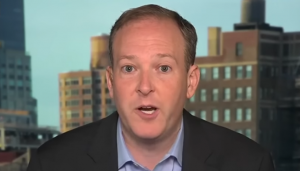Sri Lanka declared
a state of emergency on Friday night as protests over the island nation’s burgeoning
economic crisis threatened to destabilise the political leadership. In
Pakistan, the political leadership has already been destabilised with Imran
Khan being ousted from power. The primary accusation against him is of economic
mismanagement. Nepal isn’t in good shape either and the less said about
Afghanistan and Myanmar the better. India is reeling under high inflation and
China, the world’s second largest economy, is facing financial trouble due to
its COVID curbs.
All in all, it’s
not a good time to be in South Asia.
The current crises
are not of the pandemic’s making. All that the pandemic did was to exacerbate
the problems requiring them to be addressed immediately. While the scale and
impact of the current crisis is reminding many of the South East Asian economic
crisis 25 years ago, the clear distinction between the two is that South East
Asia was plunged into an economic crisis but South Asia’s crisis has been long
in the making.
Sri Lanka
The island nation
is facing a balance of payment crisis compounded by a severe foreign exchange
shortage. Foreign exchange reserves are extremely low and the government is
finding it difficult to import food, fuel and essential medicines. Thousands of
people are out on the streets calling for the Rajapaksas, the family at the helm
of Sri Lanka’s political affairs, to go.
As “Go Gota Go”
slogans (Gota is a reference to Sri Lankan President Gotabaya Rajapaksa) fill
the air, the government, at a loss about how to solve the economic crisis, is
cracking down on protestors. Sri Lankan authorities are said to have used
force, including the use of tear gas and arbitrary detentions, to quell
peaceful assemblies, according to an Amnesty International report titled, “From
Bad to Worse: Rights Under Attack During Sri Lanka’s Economic Crisis.”
Pakistan
Imran Khan, who
came to power in Pakistan with the promise to rid the country of the corrupt
elite in control of resources, has the active distinction of being that
Pakistani leader under whom the nation’s GDP plunged below Bangladesh’s. In the
four years Imran Khan was in power, Pakistan’s GDP fell from $315 billion to
$292 million, according to a report in The Hindu Business Line.
Now, with Khan having
been ousted, the fate of Pakistan lies with Shahbaz Sharif. Sharif, brother of
former Pakistan PM Nawaz Sharif, has spearheaded the Sharif “Steel Empire.” But
it remains to be seen how he manages Pakistan’s economy.
Nepal
The central discussion
in South Asian geopolitics over the last week isn’t how to lift Nepal out of
its economic crisis but is Nepal really in an economic crisis. A tourism-dependent
country, Nepal’s economy did take a deadly blow on account of the COVID-19
pandemic. But is Nepal going the Sri Lanka way? Probably not right now.
Nepal’s foreign
exchange reserves have been dwindling since July 2021 since the fall of the KP
Sharma Oli government. Forex reserves dropped from $11.75 billion in mid-July
2021 to $9.75 billion in February 2022. The amount is only enough to pay import
bills for less than seven months the threshold set as a benchmark by the
country’s central bank.
India
India, by all
definitions, is not in the middle of an economic crisis. While the
Russia-Ukraine war has put a stress on global supply chains that have impacted
India, leading to higher crude prices that, among other factors, have led to
inflation, India’s political system has remained steadfast and stable.
However, the
disturbances in the rest of South Asia are bound to have an impact on one of
world’s fastest-growing economies. India is sending help to its neighbouring
nations, including Sri Lanka, Afghanistan and Nepal. But domestically, the
country is seeing high unemployment and a rise in communal violence, which
while not causing active dissonance in society threatens to put India in the
middle-income trap.
China
China’s troubles,
are of course, different from the rest of the countries. A superpower in all
its senses, the Chinese economy is quite literally too big to fail. But it’s
not as if Beijing is without its stresses. President Xi Jinping’s zero-COVID
policy has but China’s businesses under considerable strain.
Xi has refused to
compromise on his strongman persona ahead of scoring the third term as
president, but businesses in China are reeling under heightened government
regulation in addition to the COVID curbs. Further, the fate of Chinese
interests in Sri Lanka and Nepal also has a bearing on Beijing’s ability to
maintain and increase its sphere of influence.






